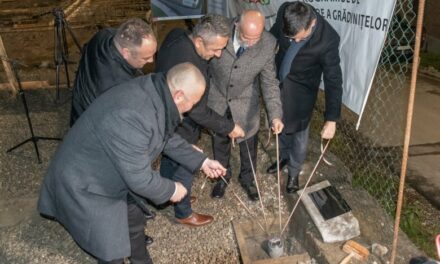Apart from the Communists' cascading in 1950, the Hungarian public administration has perhaps never been overhauled to the extent that Slovakia is preparing for for the second time in thirty short years. The disadvantages of immaturity - we could say sarcastically - but it is unnecessary to write an article about Slovakia's lack of history, since anyone who is interested in such things must have already heard about it. However, the planned public administration reform has two noteworthy aspects. One is the attempt to de-Hungarianism, which permeates all serious Slovak measures on a regular basis, and the other is perhaps even more serious: the increasingly urgent answer to the questions of our destiny that are pressing on us due to globalization.
There are currently 8 districts (semi-officially called counties) in Slovakia, and 79 districts belong to them. In 1996, the 38 larger districts and 3+1 districts inherited from communist times were thoroughly reorganized by the Mečiar government: they doubled the number of districts and formed eight districts, in many places breaking up the regions that historically belonged to the same region, carefully ensuring that the proportion of Hungarians in each district should be as small as possible. Hungarians from Csallóköz or Garam can thus still go to Nagyszombat or Nyitra to manage county-level matters, and Hungarians from Gömör also have to make a pilgrimage to Besztercebánya.
The Hungarians of the highlands hoped for territorial autonomy or at least one Hungarian-majority county during every transformation, but their political representation never had enough courage, or later even the strength, to take these seriously.
According to the material leaked by the ultra-liberal Napunk, the Ministry of the Interior would now be using this system, which is quite strange from a failed government that is only acting as an executive. The success of the project is therefore doubtful, but the intention should not be taken lightly. According to this, the number of districts would be reduced to 46 and the number of districts to five, the latter with the centers of Bratislava, Nyitra, Zsolna, Besztercebánya and Kassa, and the municipalities would also be merged into much fewer centers. Due to the rise of online administration, there really is no longer a need to have a village hall at every bush and a district seat at every intersection, so the plan itself does not seem to be from the devil - until you look at the attached map.

Current administrative division of Slovakia
On the one hand, it shows that the country's current almost three thousand municipalities would be merged into 118 district centers, and only these would have village offices. In addition, quite strange contrasts would arise, since in several places they would create dwarf settlements smaller than the current ones, while in other places they would create giant settlements with a population of hundreds of thousands. Both operations would seriously affect the Hungarians in the highlands.
The final dissolution of the Hungarian bloc
There would be two tiny Hungarian districts centered on Párkány and Nagykapos, as well as the also small Ipolyság district with a slight Hungarian majority; these, as well as the currently existing Dunaszerdahely district, would have a Hungarian majority. In addition, the neighborhood of Tornalja would be added to the district of Rimaszombati, which is large in terms of area and average in terms of population, which would slightly increase the share of Hungarians in the district with a Slovak majority. If that were all the changes consisted of, then we could easily give it a hand, but now comes the black soup.

The public administration draft prepared by the Slovak Ministry of the Interior without social consultation.
The public administration draft prepared by the Slovak Ministry of the Interior without social consultation.
- The Dunaszerdahely district would be mutilated, as Somorja, which is rapidly becoming Slovakian due to its proximity to the capital, and its surroundings would now also be administratively made the prey of a huge Bratislava district.
- The Galántai and Vágsellye districts would be merged into the giant district centered on Nagyszombat, their current Hungarian population of around 30% would henceforth be completely subordinated to one of the strongholds of Slovak chauvinism.
- The district of Komárom would disappear, it would be merged into the district of Érsekújvár, so the whole of Alsó-Csallóköz and the Hungarian region along the Danube would be part of a unit with a Slovak majority.
- With the separation of the Ipolyság district, the proportion and weight of Hungarians in the Léva district would drastically decrease.
In summary, it can be said that four tiny districts would have a Hungarian majority, but in return, the Hungarianness of the Kisalföld region would be broken even more, accelerating the Slovakization. In other words, block Hungary would slowly transform into a few patchy exotics within Slovakia, which would be the achievement of the centuries-old goal of (Czecho)Slovak national policy.
So there is no reason to be calm, since this intention already exists as an idea drawn on a map, so one way or another, it would be on the agenda even if this reform draft does not pass now.

In Bratislava, the focal point of urbanization is becoming denser at an alarming rate (photo: ta3.com)
Not only de-Hungarianization, but also the victory of modernity
In order to develop the concept, they awaited partial data from the latest census data regarding the residents' habits and commuting routine. It hardly bothers those in charge that the draft would be a serious blow to Hungarians, but it must be admitted that in many places it really fits the trends. In fact, the tendency of globalization and urbanization to grind up Hungarians in the highlands was put on the map for the first time. The giga-districts of Bratislava, Nagyszombat and Kassai are actually the urbanization catchment areas drawn up in the public administration, just as the small and insignificant districts of Párkáni, Ipolyság and Nagykapos, planned in the peripheral regions, also reveal the living conditions of the Hungarians living there.
Globalization urbanization and the Slovakian national strategy therefore offer two options for Hungarians in the highlands: integration with Slovaks in one of the metropolitan catchment areas or peripheral isolation.
Cover image source: dublez.sk
(The reader's letter is not the editor's opinion)












